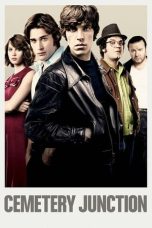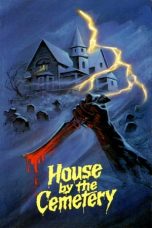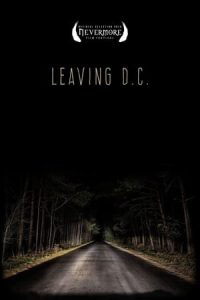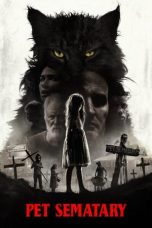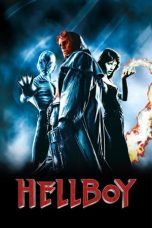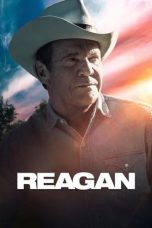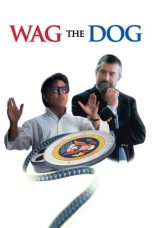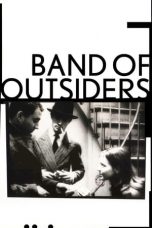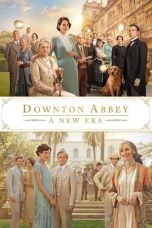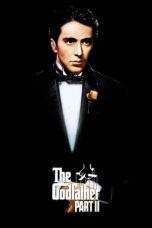- Source: Hollywood Cemetery (Richmond, Virginia)
Once Upon a Time… in Hollywood (2019)
Leaving D.C. (2013)
MaXXXine (2024)
Reagan (2024)
Wag the Dog (1997)
Operation Fortune: Ruse de Guerre (2023)
No More Posts Available.
No more pages to load.
Hollywood Cemetery is a historic rural cemetery located at 412 South Cherry Street in the Oregon Hill neighborhood of Richmond, Virginia. It was established in 1847 and designed by the landscape architect John Notman. It is 135-acres in size and overlooks the James River. It is one of three places in the United States that contains the burials of two U.S. Presidents, the others being Arlington National Cemetery and United First Parish Church.
Due to Richmond's role as capital of the Confederate States of America during the American Civil War, the cemetery contains the burials of many government officials of the confederacy including president Jefferson Davis and secretary of war James A. Seddon. Hollywood contains the burials of 25 Confederate States Army officers including generals J.E.B. Stuart, Fitzhugh Lee and George Pickett. The cemetery contains the remains of over 11,000 confederate soldiers, the largest number buried in one cemetery. They are memorialized by the Monument of the Confederate War Dead, a 90-foot tall granite pyramid built in 1869. The cemetery is considered the unofficial National Confederate Cemetery and has hosted ceremonies commemorating Confederate Memorial Day since 1866. Hollywood Cemetery was added to the National Register of Historic Places in 1969.
Description
The cemetery is in the Oregon Hill neighborhood of Richmond. It is 135 acres in size and overlooks the James River. It is one of the most visited cemeteries in Virginia.
= Presidents Circle
=Hollywood Cemetery is the only cemetery besides Arlington National Cemetery that contains the burials of two U.S. Presidents. Although the United First Parish Church in Quincy, Massachusetts, contains the burial of two U.S. Presidents, John Adams and John Quincy Adams, in a crypt below the church.
President James Monroe was originally interred in Marble Cemetery in New York City when he died in 1831. Virginia petitioned to have his remains reinterred to Hollywood Cemetery. The Gothic Revival James Monroe Tomb monument designed by Albert Lybrock resembles a bird cage surrounding a simple granite sarcophagus. It was built in the Presidents Circle section of the cemetery and dedicated by Virginia governor Henry A. Wise on July 5, 1858. The monument was designated a National Historic Landmark in 1971.
President John Tyler was buried in the Presidents Circle section of the cemetery in 1862 and a monument was dedicated by Congress in 1915. His death was not recognized in Washington, D.C., due to his allegiance to the confederacy. His burial ceremony was escorted by Jefferson Davis and address given by Armistead C. Gordon.
Confederate president Jefferson Davis died in 1889. He was initially interred in Metairie Cemetery in New Orleans, and reinterred to Hollywood Cemetery in 1893. A life-size statue made of bronze sculpted by George Julian Zolnay was added near his grave.
= Monument of Confederate War Dead
=In 1869, a 90-foot (27 m) high granite pyramid designed by Charles H. Dimmock was built as a memorial to the more than 11,000 enlisted men of the Confederate Army buried in the cemetery. The monument is made of roughly cut James River granite blocks. The monument is inscribed with text in Latin that translates to, "In eternal memory of those who stood for God and Country." It was a project supported by the Hollywood Ladies' Memorial Association, a group of Southern women dedicated to honoring and caring for the burial sites of fallen Confederate soldiers. The pyramid became a symbol of the Hollywood Memorial Association, appearing on its stationery as well as on the front of a pamphlet of buried soldiers, the Register of the Confederate Dead.
History
William Byrd III, a wealthy planter, politician and military officer, was facing financial problems and divided his estate in Richmond known as the Belvidere into several plots 100-acres in size for sale. The Harvie family bought several of these lots which became known as "Harvie's Woods."
In 1847, Joshua J. Fry and William H. Haxall, visited Mount Auburn Cemetery in Boston, Massachusetts. They were impressed with Mount Auburn and proposed the creation of a similar rural cemetery in Richmond. It was through their efforts and the subsequent cooperation of local citizens that Hollywood Cemetery was created.
Fry, Haxall, and 40 other prominent Richmond citizens purchased 42 acres from Lewis E. Harvie on June 3, 1847, for $4,075 to establish the cemetery. The founders hired John Notman, who was the landscape architect for Laurel Hill Cemetery in Philadelphia, to design the cemetery in the rural garden style. It was originally planned to be named Mount Vernon Cemetery, however Notman proposed the name Hollywood due to the abundance of holly trees on the property. Oliver P. Baldwin delivered the dedication address in 1849.
Hollywood Cemetery became so popular, that by the mid-1850s, the city of Richmond implemented an omnibus to transport visitors there every afternoon. A streetcar line was added in the 1860s.
= American Civil War
=At the outbreak of the American Civil War, the cemetery directors set aside two acres for confederate soldier burials which became known as the Soldiers' Section. Richmond citizens became outraged when they learned that soldiers that died in local hospitals were buried in potter's fields. In response to the outrage, the city increased the number of burials of dead soldiers at Hollywood and established Oakwood Cemetery across town for additional burials.
The initial two acres assigned for soldier burials became full by July 1862 and the cemetery purchased additional land funded by the confederate government. By April 1865, the cemetery contained more than 11,000 confederate soldiers, which accounted for more than half of the total burials in the cemetery. After the war, the Ladies' Memorial Association worked to reinter 2,935 confederate soldiers from Gettysburg to Hollywood Cemetery. Confederate Civil War veterans continued to be buried in the cemetery into the 1900s.
The cemetery claims to contain the burial of 18,000 confederate soldiers, however researchers believe the number is actually several thousand lower. It is the largest single burial location of confederate soldiers. It contains the burials of 25 Confederate Army officers including J.E.B. Stuart, Fitzhugh Lee and George Pickett.
At George Pickett's request, he was buried among his men in his native Richmond when he died in 1875. LaSalle “Sallie” Corbell Pickett hoped she could be buried there too. Women were not allowed to be buried in the soldiers’ section of Richmond's Hollywood Cemetery at the time of Mrs. Pickett’s death in 1931. In 1998, for the first time a woman's remains have ever been allowed in this area, Mrs. Pickett was reburied in the Gettysburg soldiers’ section of Hollywood Cemetery by her husband. “Mrs. Pickettt died in the early 1930s, and had wanted to be buried with her husband in the Hollywood Cemetery. But the Hollywood Ladies Memorial Society, which then controlled the Gettysburg Hill portion of the cemetery, would not allow it.” Richmond Discovery tour guide Jim DuPriest said.” So, Mrs. Pickett was buried in Abbey Mausoleum [which was] nearby, besides, and adjacent to Arlington National Cemetery in Northern Virginia.” … “Near the end of the ceremony, the families sprinkled soil from Mrs. Pickett’s home in Chuckatuck, Nansemond County, Virginia.”
The cemetery is unofficially considered the Confederate National Cemetery.
= Confederate Memorial Day
=On May 31, 1866, Hollywood Cemetery held its first Confederate Memorial Day celebration, and over 20,000 people were in attendance. The celebrations "became imbued with cultural and religious symbolism that underscored the gravity of what it meant to be a southerner."
The second Confederate Memorial Day celebration in 1867 at Hollywood Cemetery differed greatly from the one the year before. There were fewer marches and military bands and more women and children in attendance.
= Other history
=In 1876, the Gothic Revival stone structure designed to look like a ruined medieval tower was built at the entrance to house the chapel, office and receiving vault. In 1915, the original entrance was closed and the present one was opened to better facilitate cars.
The cemetery expanded in 1877 with the purchase of an additional thirty-three acres along the river.
On November 12, 1969, Hollywood Cemetery was added to the National Register of Historic Places.
The Palmer Chapel Mausoleum was built 1992, adding 730 crypts for caskets and 160 cremation niches.
There are many local legends surrounding certain tombs and grave sites in the cemetery. One interesting grave of Florence Rees, a girl that died at 3 years old in 1862 of scarlet fever. The grave includes a cast-iron statue of a dog that stands watch over her. A local legend claims the statue was moved to the cemetery to prevent it from being melted down and used for bullets in the Civil War. There is also the legend of Richmond Vampire which purports that William Wortham Pool, buried in the cemetery, was a vampire.
In 2020, Hollywood Cemetery's board of directors quietly banned the display of Confederate flags in the cemetery due to its connection as a symbol of racism and the potential to provoke vandalism.
A place rich in history, legend, and gothic landscape, Hollywood Cemetery is also frequented by many of the local students attending Virginia Commonwealth University.
Notable burials
Gallery
See also
List of burial places of presidents and vice presidents of the United States
List of burial places of justices of the Supreme Court of the United States
List of cemeteries in the United States
References
Citations
Sources
Smith, Ryan K. (2020). Death and Rebirth in a Southern City - Richmond's Historic Cemeteries. Baltimore, Maryland: Johns Hopkins University Press. ISBN 978-1-4214-3927-3.
Stoddard, Christine; Thomas, Misty (2014). Richmond Cemeteries. Charleston, South Carolina: Arcadia Publishing. ISBN 978-1-4671-2204-7.
Further reading
Kollatz, Harry (2007). True Richmond stories: historic tales from Virginia's capital. Charleston, SC: History Press. ISBN 978-1-59629-268-0.
Mitchell, Mary H (1985). Hollywood Cemetery: the history of a southern shrine. Richmond: Virginia State Library. ISBN 978-0-88490-109-9.
Peters, John O (2010). Richmond's Hollywood Cemetery. Richmond, Va.: Valentine Richmond History Center. ISBN 978-0-615-39192-2.
External links
Official website
James Monroe Tomb, Hollywood Cemetery, Richmond, Independent City, VA: 6 photos, 1 color transparency, 6 data pages, and 1 photo caption page at Historic American Buildings Survey
U.S. Geological Survey Geographic Names Information System: Hollywood Cemetery

